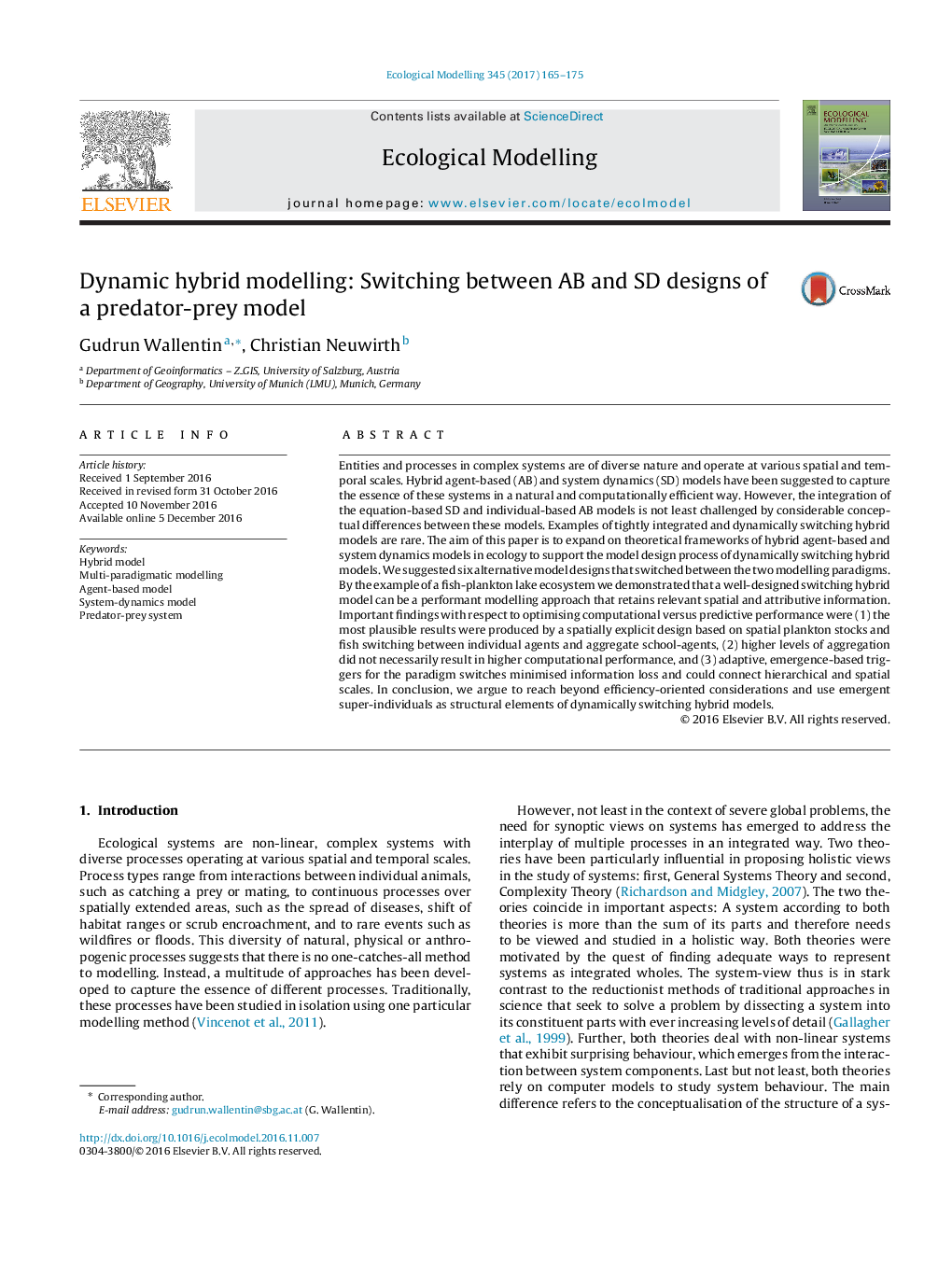| Article ID | Journal | Published Year | Pages | File Type |
|---|---|---|---|---|
| 5742270 | Ecological Modelling | 2017 | 11 Pages |
â¢Switching hybrid AB-SD models aggregate individual organisms based on emergence.â¢Emerged higher-level collectives aggregate agents with minimal loss of information.â¢Switching individuals and super-individuals can link spatial and hierarchical scales.â¢Dynamic switching between paradigms can greatly reduce the computational burden.â¢Thus switching hybrid models optimise computational versus predictive performance.
Entities and processes in complex systems are of diverse nature and operate at various spatial and temporal scales. Hybrid agent-based (AB) and system dynamics (SD) models have been suggested to capture the essence of these systems in a natural and computationally efficient way. However, the integration of the equation-based SD and individual-based AB models is not least challenged by considerable conceptual differences between these models. Examples of tightly integrated and dynamically switching hybrid models are rare. The aim of this paper is to expand on theoretical frameworks of hybrid agent-based and system dynamics models in ecology to support the model design process of dynamically switching hybrid models. We suggested six alternative model designs that switched between the two modelling paradigms. By the example of a fish-plankton lake ecosystem we demonstrated that a well-designed switching hybrid model can be a performant modelling approach that retains relevant spatial and attributive information. Important findings with respect to optimising computational versus predictive performance were (1) the most plausible results were produced by a spatially explicit design based on spatial plankton stocks and fish switching between individual agents and aggregate school-agents, (2) higher levels of aggregation did not necessarily result in higher computational performance, and (3) adaptive, emergence-based triggers for the paradigm switches minimised information loss and could connect hierarchical and spatial scales. In conclusion, we argue to reach beyond efficiency-oriented considerations and use emergent super-individuals as structural elements of dynamically switching hybrid models.
